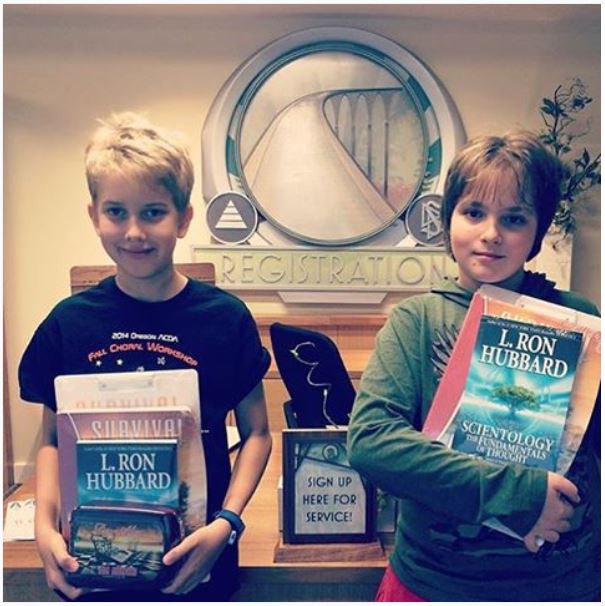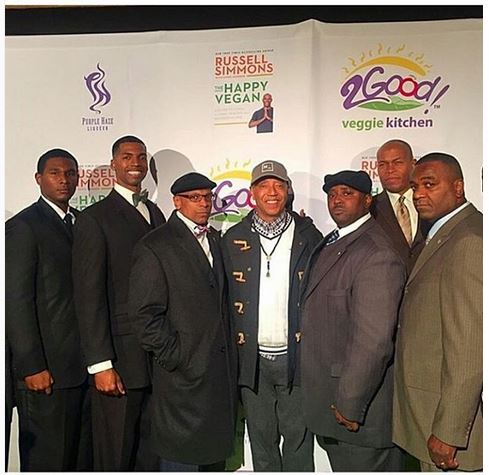Thirty years ago today, this planet lost a singular individual to parts unknown. Lafayette Ronald Hubbard had lived one of the most unique lives in history. He had literally created his own personal navy from crew members who signed pledges to serve him for a billion years. He convinced thousands of people that they could become gods by paying him large sums of money and ridding themselves of invisible sentient entities. He had become fabulously rich at the same time that he had spent the last ten years of his life mostly in hiding and fearing that he’d be arrested or sued.
And finally, on January 24, 1986, he left us. Thirty years later, we still marvel at what L. Ron Hubbard convinced people to do and say. At least there’s that, whatever else you might say about a man with enormous problems telling the truth and who often treated other people as less than human beings.
How to sum up a life like L. Ron Hubbard’s? We still struggle with it three decades after his death, even though we write about the creation he left behind every single day. But we take solace that the people who knew him best also found it wasn’t easy to summarize Hubbard after he was gone, and today we have a special example of that.
Once again, we’re indebted to researcher R.M. Seibert, who pounced when she realized that something really unique was on sale recently at eBay. It was the April 1986 edition of Science Fiction Chronicle, a monthly publication edited by Sci Fi superfan Andrew Porter (who happens to be a regular reader of this website). Seibert knew its significance and purchased the artifact before anyone else could.
The Chronicle was concerned that month with all of the recent deaths that had hit the science fiction field so hard. The beginning months of 1986 were, Porter noted, the worst for losing figures in the field since the dismal years of 1958 and 1968. The front page of the publication was dominated by the grim news: On February 11, Dune author Frank Herbert had died, and 1986 had also taken away agent Robert Mills and publisher Judy-Lynn Del Rey. Inside, back on page 26, lost a bit in all the more important news, there was also an obituary for Hubbard. It was written by his old friend and former literary agent, Forrest Ackerman.
Last year, we brought to your attention a rather amazing letter written to Ackerman by Hubbard in 1949, as Hubbard prepared to unleash Dianetics on the world the next year. Hubbard told Ackerman that he planned to send him a pre-publication version of the book, “Then you can rape women without their knowing it, communicate suicide messages to your enemies as they sleep, sell the Arroyo Seco parkway to the mayor for cash, evolve the best way of protecting or destroying communism, and other handy house hold hints. If you go crazy, remember you were warned.”
Hubbard went on to explain that he had “not decided whether to destroy the Catholic church or merely start a new one” with the book. Considering what came afterward, it’s not so easy to say that he was entirely joking.
Anyway, when Hubbard died, Ackerman was called upon to write an obituary of the man he had known so well. The title, we have found, is referenced pretty often in publications about Ackerman and Hubbard, complete with its unique spelling, “L. Ron Hubbard: Fond Rememberance — With Warts.” But we could not find a copy of it anywhere online. So we thank R.M. Seibert for once again bringing us something to post on this website that will likely be new for most of our readers.
Here, then, is how an expert in the field of science fiction, a lifelong fan who had known Hubbard quite well, summed him up for his fellow science fiction enthusiasts.
L. RON HUBBARD: FOND REMEMBERANCE — WITH WARTS
As far as I know I was the first science fiction person to meet Lafayette Ron Hubbard. It was in the now non-existent “Shep’s Shop” on Hollywood Blvd., the nearest thing to A Change of Hobbit in its day, and the day was one night in 1937. I believe I was the catalyst that started him writing science fiction: on the spot, when I discovered he was a pulp writer and asked if he’d ever written any science fiction. (I think we were still calling it that then), he began spinning a yarn about a new Ice Age 25,000 years hence in California. If such a story was ever written it was never published that I am aware of, but if for nothing else you can perhaps thank me that he gave the field “Final Blackout”, “Fear” and the Ole Doc Methuselah series.
One memorable night LRH came to the LASFS (Los Angeles Science Fantasy Society) and hypnotized just about everybody in the club except me and my wife. One fan, with cupped hands, came to me and showed me the little kangaroo hopping about which Ron had induced in his mind. Arthur Jean Cox’s brother Bill was given a post-hypnotic suggestion: when Ron would casually rub his nose, Bill would instantly fall asleep. A cluster of fans had surrounded Ron when his nose actually itched; he scratched and fortunately I was directly behind Bill because he slumped dead to the world backward into my arms.
During the hypnosis demonstration a forgotten fan was told that a few minutes after he was brought out of his trance he would hear the phone on the clubroom wall ring, he would answer it and the (imaginary) voice on the other end of the line would make him a fantastic offer on an automobile. But no matter how great the deal he would come up with some reason to refuse it. The monolog went something like this:
“A brand new Cadillac? Only $500? Well, gee, yes, that is a bargain, but I only have $400. Oh, you’d take $400? But, you see, I have bills to pay and half that money is already spoken for. — You’d let me have it for $200? My Mother told me…” And so it went. Even when he offered it free he came up with some excuse to turn it down.
Several years later Ron recommended people not play around with hypnotism.
Early in my agentorial career I was both fortunate and unfortunate in acquiring LRH as a client. He was the only Big Name Author from whom I deliberately divorced myself because I felt he was more trouble than he was worth. The problem was, I was supposed to be his exclusive agent but he would be having dinner with a Dutch agent in Washington, DC, and the Dutchman over drinks would excite Ron with promises of how he could sell his work in the Netherlands and the next thing I’d know I’d hear a yelp from my subagent saying, “Do we or don’t we represent Ron Hubbard? I walked into a publisher’s office the other day and there sat an agent with a lapful of Hubbard’s books — !” Double agents (no pun intended) could obviously cause considerable confusion. I explained to Ron why he couldn’t do that and he said he got carried away and he understood and he wouldn’t do it again. And the next thing I knew he’d done it again. I tried patiently to point out to him that such actions were fraught with danger — unbeknownst to each other some day two publishers might print the same book and then he’d be in hot water.
Result: solemn oath not to break the rules.
Reality: he broke ’em.
Consequence: I broke with him.
About the early 70s we got back together again. He made a generous offer I couldn’t refuse: “Just get me in print. Forry, I don’t care about the money: you keep half of it.” He caused me no further trouble but half of nothing was nothing in the case of one anthologist who justified using a Hubbard story without paying because he considered LRH in the same class with Hitler and Satan (not necessarily in that order).
About LRH, Dianeticist & Scientologist. I prefer to say very little, except that I saw some small wonders worked by early Dianetics and, as a secular humanist, I have no belief in past lives, especially lives contactable millions of years ago when one saw Flying Saucer people land on Earth or one was a primordial clam lying on a prehistoric seashore being irritated by a grain of sand, end result, a pearl.
I’m told that 1500 L.A. acolytes were assembled to receive the news that Ron had decided to “drop his body.” He didn’t die. I heard further from an inside source that several days before his demise he told his closest associates that his work in this lifetime was complete and a few nights later he went to bed, voluntarily shut off the flow of oxygen to his brain and shrugged off this mortal coil. The newspapers reported that he died of a stroke. Take your choice. Scientologists may not be too pleased with my attitude; science fiction fans — who knows?
His charismatic daughter Diana and dynamic son Arthur I like a lot. Ditto Scientologists Virgil Wilhite (Hollywood) and Irene Thrupp (England).
In summation:
He was one of the consistently entertaining writers of SF’s Golden Age.
He was a controversial character to the mundane world (and to a certain extent the supermundane world of Sci-Fi) but through all a good friend to me.
As a human being I regarded him as neither saint nor devil but an extraordinarily complex unique individual whom I would rank in the “odd genre”, with Eric Frank Russsell, Ralph Milne Farley, Manly Wade Wellman, Leo Zagat, George Allen England, Victor Rousseau, Otis Adalbert Kline, and Jack Williamson.
You were perhaps the world’s fastest typist Ron: Keep that Typewriter in the Sky blazing!
— Forrest Ackerman
Well, there you have it from someone who knew Hubbard best. Not exactly “Mankind’s Greatest Friend,” or a “humanitarian,” or the Great Thetan. Hubbard was, as Ackerman remembered him, a master hypnotist, a bit of a con artist even with his friends, and an “extraordinarily complex unique individual.”
He was also a recluse, and his demise was a special challenge for the young Scientology executives who were tasked with dealing with it. Russell Miller, Jon Atack, and Lawrence Wright have each written in depth about Hubbard’s final days and the mad dash by his followers to have him cremated as soon as possible (his remains were scattered at sea). They then had the enormous task of breaking the news to his congregation, which was made up of people who had considered Hubbard something more than human, the homo novus who had unlocked the secrets of the universe. How would they react at news of his death?
That episode came three days later, on January 27, so on that day, Wednesday, we’re going to bring you remembrances of the event from people who were there, and we’ll look once again at the video of the announcement by a young David Miscavige. We think you’ll find the things we’ve been told about it really interesting.
In the meantime, here’s that copy of Science Fiction Chronicle…
Science Fiction Chronicle, April 1986
——————–
Bonus photos from our tipsters
Pete Griffiths found this image posted by the Portland org with the caption: “Getting ready for some life changing wins!”
Another shot from the Portland folks, who are not doing their impression of Invasion of the Bodysnatchers, we swear.
While he awaits felony charges on Medi-Cal fraud, Rizza Islam (second from left) still made the scene with rap mogul Russell Simmons (center). Says Rizza: “Bro. Simmons called me over when he was signing some of his books and asked me if he could ‘take my picture’? I said: ‘Sure’. He then said: ‘I want to show the people that the F.O.I and the Nation Of Islam take care of me’.”
——————–
 Posted by Tony Ortega on January 24, 2016 at 07:00
Posted by Tony Ortega on January 24, 2016 at 07:00
E-mail tips and story ideas to tonyo94 AT gmail DOT com or follow us on Twitter. We post behind-the-scenes updates at our Facebook author page. After every new story we send out an alert to our e-mail list and our FB page.
Our book, The Unbreakable Miss Lovely: How the Church of Scientology tried to destroy Paulette Cooper, is on sale at Amazon in paperback and Kindle editions. We’ve posted photographs of Paulette and scenes from her life at a separate location. Reader Sookie put together a complete index. More information about the book, and our 2015 book tour, can also be found at the book’s dedicated page.
Learn about Scientology with our numerous series with experts…
BLOGGING DIANETICS: We read Scientology’s founding text cover to cover with the help of L.A. attorney and former church member Vance Woodward
UP THE BRIDGE: Claire Headley and Bruce Hines train us as Scientologists
GETTING OUR ETHICS IN: Jefferson Hawkins explains Scientology’s system of justice
SCIENTOLOGY MYTHBUSTING: Historian Jon Atack discusses key Scientology concepts
Other links: Shelly Miscavige, ten years gone | The Lisa McPherson story told in real time | The Cathriona White stories | The Leah Remini ‘Knowledge Reports’ | Hear audio of a Scientology excommunication | Scientology’s little day care of horrors | Whatever happened to Steve Fishman? | Felony charges for Scientology’s drug rehab scam | Why Scientology digs bomb-proof vaults in the desert | PZ Myers reads L. Ron Hubbard’s “A History of Man” | Scientology’s Master Spies | Scientology’s Private Dancer | The mystery of the richest Scientologist and his wayward sons | Scientology’s shocking mistreatment of the mentally ill | Scientology boasts about assistance from Google | The Underground Bunker’s Official Theme Song | The Underground Bunker FAQ
Our Guide to Alex Gibney’s film ‘Going Clear,’ and our pages about its principal figures…
Jason Beghe | Tom DeVocht | Sara Goldberg | Paul Haggis | Mark “Marty” Rathbun | Mike Rinder | Spanky Taylor | Hana Whitfield










